#natural science
Text

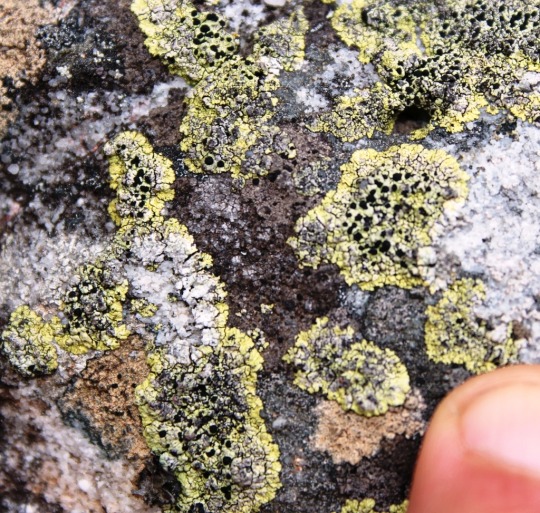

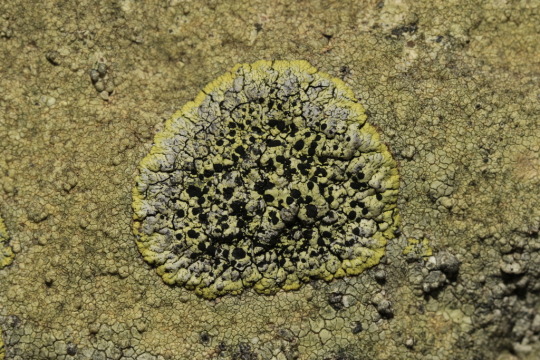
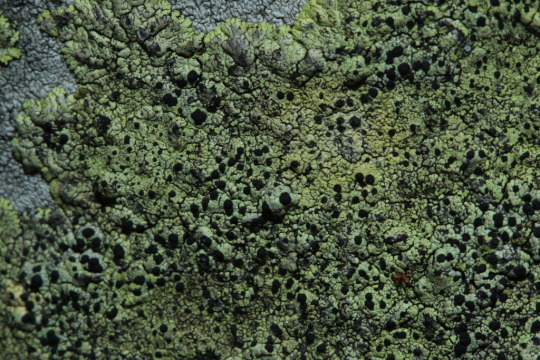


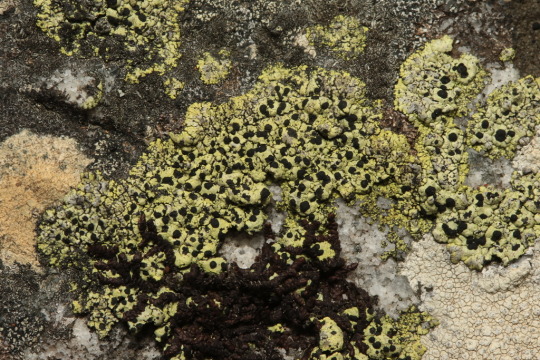
Diploicia africana
This crustose-placodioid lichen grows in yellow rosettes on siliceous, rock in South Africa. The upper surface is often bleached and wrinkled toward the center of the rosette, and speckled with black, lecideine apothecia. Being that D. africana is a) crustose b) saxicolous and c) endemic to the southern hemisphere, it shouldn't be surprising that this lichen appears to be largely understudied, and it might be more widespread than currently recognized.
images: source
info: source
#lichen#lichens#lichenology#lichenologist#mycology#ecology#biology#fungi#fungus#symbiosis#symbiotic organisms#algae#life science#environmental science#natural science#nature#the natural world#Diploicia africana#Diploicia#trypo#trypophobia#I'm lichen it#lichen a day#daily lichen post#lichen subscribe
56 notes
·
View notes
Text
Okay, so this is really cool! You have this phenomenon where some plants grow edible appendages to their seeds to entice ants to carry them underground where they can safely sprout. And then you have wasps which lay their eggs on the leaves, stems, and other parts of plants and trigger the growth of galls (swellings) which both feed and protect the wasp larvae until they reach maturity.
The boy who was watching the ants noticed they were taking wasp galls underground, too. Further exploration found that the wasp larvae were unharmed inside the galls; the only thing the ants had eaten were edible appendages similar to those on the seeds they collected. The wasp larvae stayed safe inside the ant nest, feeding on their galls, until it was time to emerge and head back out to the surface.
So it turns out that the edible portions of the galls have the same sorts of fatty acids as the edible parts of the seeds. And those fatty acids are also found in dead insects. Scientists think that the wasps evolved a way to make the galls they created mimic the edible portions of the seeds to get the ants to collect the galls. This isn't the only example of wasps making use of ants as caretakers for their young, but it's a really fascinating example thereof--especially if you consider ants evolved from wasps at least 100 million years ago.
#wasps#ants#plants#galls#oak galls#insects#invertebrates#Hymenoptera#ecology#bugs#animals#wildlife#nature#trees#entomology#science#natural science#evolution#animal behavior
12K notes
·
View notes
Text

🎃What’s the best way to kick off October? With pumpkins, of course! Did you know that pumpkins are fruits? The flowering plants that bear pumpkins are native to the Americas and are part of the family that includes watermelon, cucumbers, and zucchini. As angiosperms, pumpkin plants rely heavily on insects like bees to help transfer pollen from male flowers to female flowers. Pumpkins come in all sizes: In 2021, a farmer in Tuscany, Italy, showcased a 2,702-lb- (1,226-kg-) pumpkin—the heaviest one to date—at Italy's Lo Zuccone (the pumpkin) championship!
Photo: Linnaea Mallette, CC0, Public Domain Pictures
#pumpkin#fall#autumn#october#did you know#fact of the day#botany#natural history#natural science#cool facts#fruits
437 notes
·
View notes
Text
hello hello everyone! just here to tell you all again about our wonderful server, Biodiverse!
Biodiverse is an LGBT+ science discord server! everyone from all science fields and levels of expertise are welcome! you don’t need to be a scientist to join, just as long as you love science and want to know more about it!
we have text channels for a wide variety of science topics! there is a focus on natural sciences (mycology, botany, biology, etc.) as well as topics like chemistry and astronomy; there’s something for everyone!
there’s also fun events and community projects! this includes weekly trivia contests, occasional movie/documentary streams, study sessions, and art contests to celebrate server milestones! and honestly whatever random fun activity we feel like doing LOL
we recently started a community project forum, where members can share in depth information about any science topic of their choosing. it’s basically an info-dump channel, and personally i’m very excited to read everyone’s entries!
OH ALSO. we have custom emojis! lovingly hand drawn by yours truly. here’s a few of them :3c

if any of this sounds interesting to you, please consider checking us out! we’d love to have you!
#biology#zoology#mycology#botany#geology#ecology#microbiology#paleontology#astronomy#medicine#vulture culture#science#lgbt discord server#science discord#natural science#life science#marine biology
282 notes
·
View notes
Text

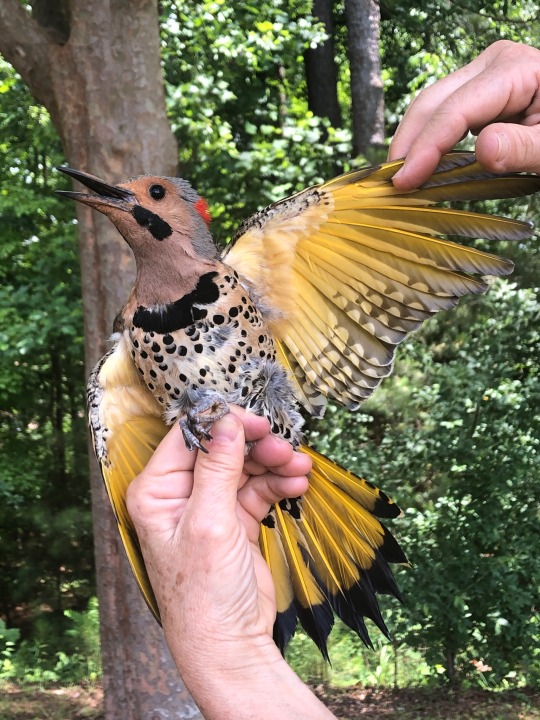
A BEAUTIFUL adult male Northern flicker (yellow-shafted) I got to band a few days ago ❤️ I love these birds. Look at those gorgeous yellow tail and flight feathers. The black spots on the breast. The red on the back of the head. The moustachial markings identifying it as male. Their legs and wings are so strong. It's always such a treat to band these birds ❤️
#birds#science#biology#nature#wildlife#art#photography#ornithology#natural science#naturalist#aesthetic#me
272 notes
·
View notes
Text

The chrysalis of the Metallic Mechanitis Butterfly from Costa Rica.
192 notes
·
View notes
Photo



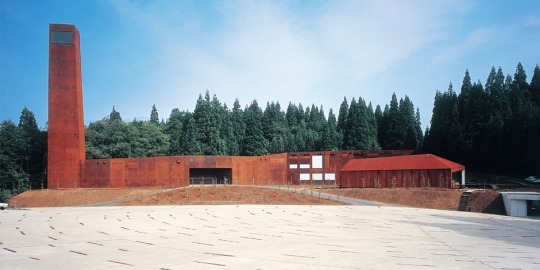



Matsunoyama Natural Science Museum, Tōkamachi - Tezuka Architects
http://www.tezuka-arch.com/english/
#Tezuka Architects#architecture#building#design#modern architecture#beautiful design#cool architecture#interiors#facade#nature#landscape#forest#natural science#museum#cultural#snow#galleries#japan#corten steel#tower
380 notes
·
View notes
Text
I was in a conversation about getting people into geoscience as more and more programs close across the world, and I have a hypothesis that most people in geology now were either able to travel, or experience different landscapes as they grew up.
-=-
35 notes
·
View notes
Text
environmental science is beautiful
I see plenty of posts about STEM dark academia, but those are usually focused on chemistry, biology, and math.
•─•°•❀•°•─•
⚘ Filling boards with elaborate cause-and-effect trees for ecology. Food webs, nutrient cycling, and pollution effects.
⚘ Hot coffee on long walks around local gardens, marvelling at the complexity of the natural world as it goes about its day.
⚘ Home-grown veggies and spices. Save yourself money, practice your horticultural skills, help reduce your carbon footprint, and eat food you feel proud of growing yourself.
⚘ Ducking in and out of crowded hallways in your labcoat, catching sideways glances from other students.
⚘ Black clothes that won't show the soil stains
⚘ Very steady hands from titrating in your chemistry labs, drawing perfect hexagons from organic chem
⚘ Stained lab books and guides tucked under your arm as you run between classrooms
#enviromental science#enviro sci#stemblr#stem academia#stem student#natural science#dark academia#academia aesthetic#romanticise everything#romanticise school#student life#grey academia#light academia#cryptid academia#chaotic academia#green academia#goblincore#earth academia#naturecore#earthcore
127 notes
·
View notes
Text
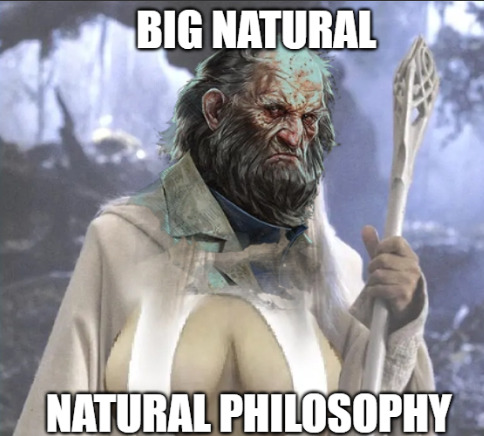
#that's it#apparently you get no context#this is Light's fault#I love it and I hate it at the same time#the demons won#anton sokolov#anton sokolov's big naturals#natural science#natural philosophy#dh#dishonored#shitpost
47 notes
·
View notes
Text
Is Natural Science finally committed to materialism? There is no doubt that the theories of science constitute trustworthy knowledge, because they are verifiable and enable us to predict and control the events of Nature. But we must not forget that what is called science is not a single systematic view of Reality. It is a mass of sectional views of Reality - fragments of a total experience which do not seem to fit together. Natural Science deals with matter, with life, and with mind; but the moment you ask the question how matter, life, and mind are mutually related, you begin to see the sectional character of the various sciences that deal with them and the inability of these sciences, taken singly, to furnish a complete answer to your question. In fact, the various natural sciences are like so many vultures falling on the dead body of Nature, and each running away with a piece of its flesh. Nature as the subject of science is a highly artificial affair, and this artificiality is the result of that selective process to which science must subject her in the interests of precision. The moment you put the subject of science in the total of human experience it begins to disclose a different character.
Muhammad Iqbal, The Reconstruction of Religious Thought in Islam
#quote#Muhammad Iqbal#Iqbal#Allama Iqbal#science#nature#reality#scientism#Islam#Islamic philosophy#religion#natural sciences#natural science#theology#holism#integration#materialism#philosophy
45 notes
·
View notes
Text

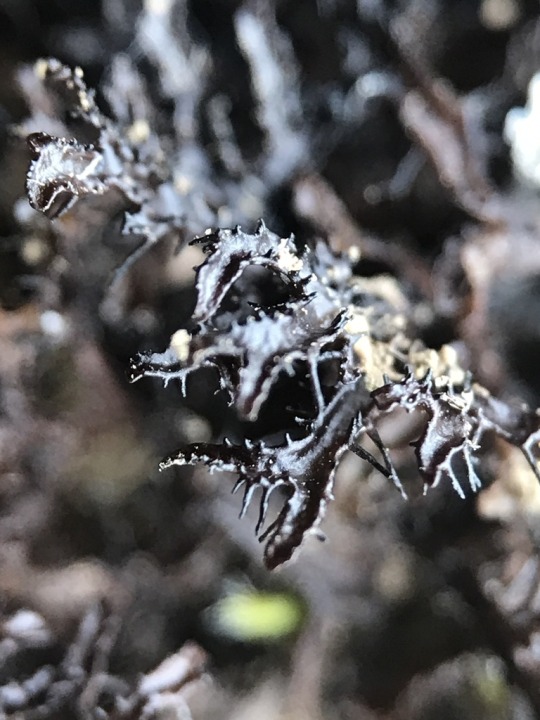

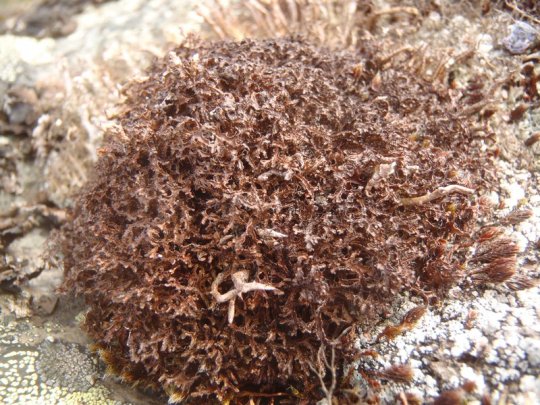




Cetraria nigricans
Blackened Iceland lichen
This foliose-fruticose lichen forms mats and rounded tufts made up of narrow, channeled, ciliate-margined lobes. The upper surface is olive to dark brown to black-brown in color, and becomes darker when exposed to sunlight. The lower surface is paler brown, with inconspicuous pseudocyphellae. It produces marginal apothecia which have spiny margins and convex, red-brown discs. C. nigricans grows on soil and rock in exposed, arctic-alpine regions.
images: source | source | source
info: source | source
#lichen#lichens#lichenology#lichenologist#mycology#ecology#biology#fungi#fungus#symbiosis#symbiotic organisms#algae#life science#environmental science#natural science#nature#the natural world#beautiful nature#weird nature#Cetraria nigricans#Cetraria#trypo#trypophobia#i'm lichen it#lichen a day#daily lichen post#lichen subscribe
45 notes
·
View notes
Text
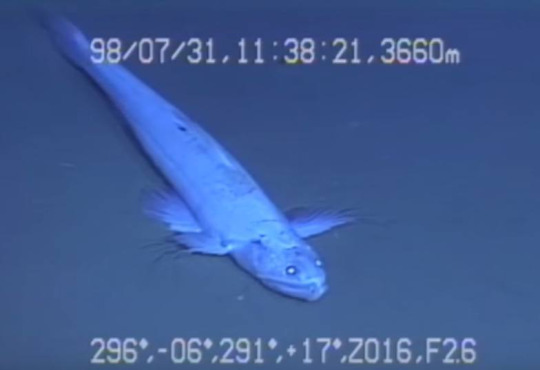

#marine biology#marine biology shitpost#biology#studyblr#natural history#paleoblr#natural science#mental wellbeing#biologyblr#scientific illustration#entomology#sea creatures#sea life#ecology#deep sea#endangered species#fishblr#signal boost#classification#evolution#snailblr#seashells#malacology#chaotic academia#scienceblr#dark academia#shit post#taxonomy#special feature deep sea creature#indigenous
267 notes
·
View notes
Text
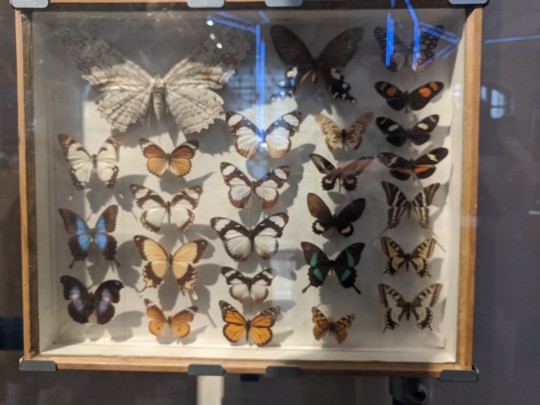



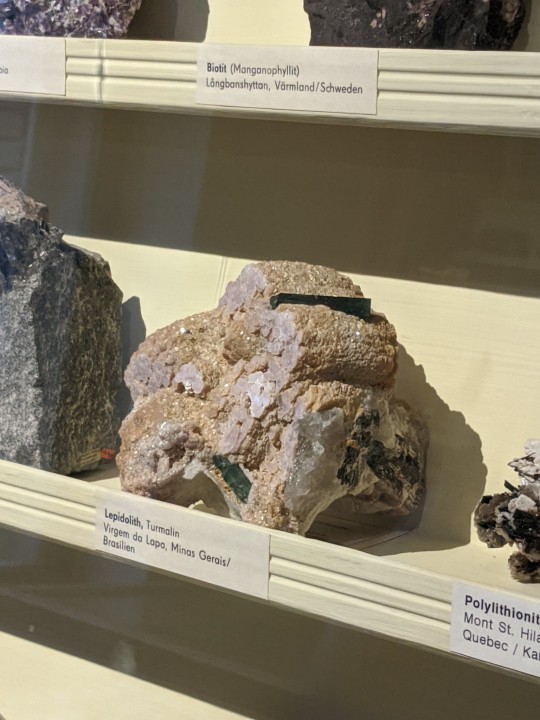
Thousands of tons of cosmic dust are estimated to reach the Earth's surface every year, with most grains having a mass between 10−16 kg (0.1 pg) and 10−4 kg (0.1 g). The density of the dust cloud through which the Earth is traveling is approximately 10−6 dust grains/m3.
The best spots to look for and find the extra-terrestrial dust particles are surfaces with little vegetation and erosion, where, once landed, they remain collectable for a long time: for example on ice surfaces in the Antarctic or on the seabed. Researchers from the Museum für Naturkunde Berlin and the Freie Universität Berlin now want to tap a new source of the scientifically very valuable material. They are counting on the active support of Berlin citizens.
Cosmic crumbs
“We want to collect micrometeorites, they are usually less than one millimetre in size, from Berlin roofs,” says project manager Lutz Hecht. The idea has already proven successful: The researchers extracted 63 micrometeorites from many kilogrammes of dust from a roof area of around 5000 square metres. They are now identifying further roofs, which could be good places to find more due to their location and nature.
At the selected locations, the material is swept together and the particles from 0.1 to 0.8 millimetres in size are sifted out. Magnetically reacting particles are then extracted from these. The yield is washed, light particles discarded and the remaining material is dried and examined under microscopes. “This is a very time-consuming task that requires the help of volunteers who help us picking out the interesting objects,” says Hecht.
Whether the interesting objects actually are micrometeorites will be checked with an electron microscope. The museum’ geochemical and microanalytical laboratories are equipped for analysis
#dinosaur#paleontology#3d video#dinosaur video#mock up#cosmic dust#cosmic wonders#cosmonaut#cosmic molecules#anthropology#butterflies#natural history#natural science#museums
172 notes
·
View notes
Text
hey there! i haven’t made an invite post in a while, so i’m here once again to promote Biodiverse !!!
we’re an LGBT+ discord server for science lovers from all fields and level of expertise! casual enjoyers of science and certified professionals (or anything in between) are all welcome :)
we have channels for a wide variety of science topics, with a focus on natural sciences like mycology, botany, biology and so much more! there’s really something for everyone.
there are server events like weekly trivia, a “living thing of the week” segment, and occasional movie/documentary streams! recently we held an art contest to celebrate hitting 300 members! (we also have cool emotes 😎)
it’s a really wonderful community full of awesome people and fascinating discussions. please consider checking us out! we’d love to have you :)
#biology#zoology#mycology#botany#geology#ecology#microbiology#paleontology#astronomy#medicine#vulture culture#science#lgbt discord server#science discord#natural science#life science#marine biology
244 notes
·
View notes
Text

Check out this awesome (angry) Great-crested flycatcher we banded a couple days ago!! 😍 This is honestly a really cool picture of the inside of a birds mouth. I recommend zooming in on the picture if you can!
Take note of the whisker like projections around the mouth. Those are called rictal bristles and they are actually modified feathers! Birds like flycatchers use them for catching insects in midair! They work by sensing bugs and sending a signal to brain to snap the mouth closed! It’s so fast that we consider it to be like a subconscious reflex!
#bird banding#birds#ornithology#photography#wildlife#nature#science#natural science#biology#he scream
145 notes
·
View notes